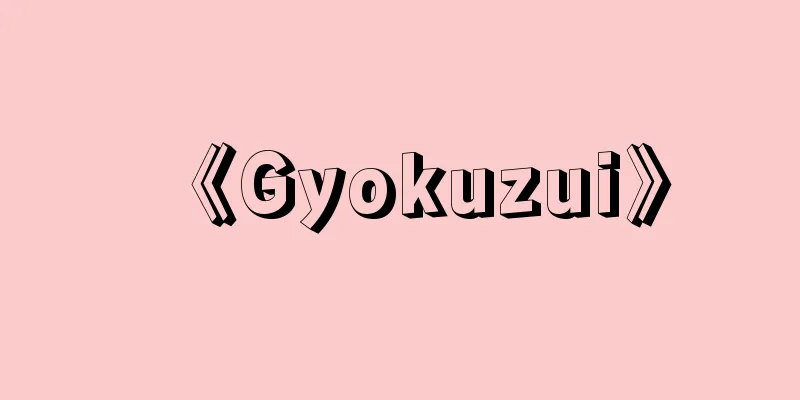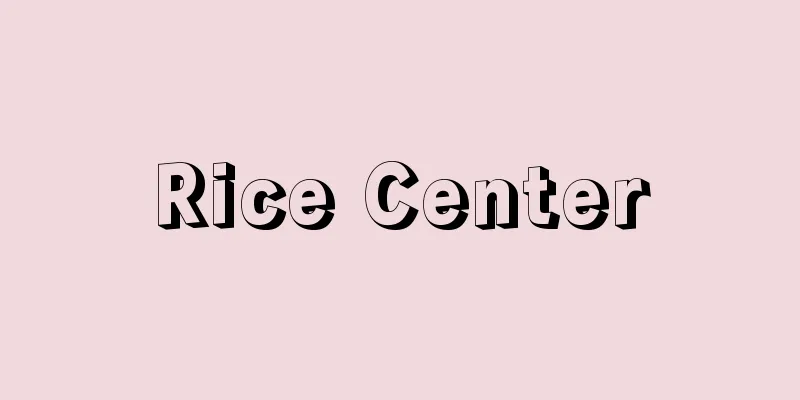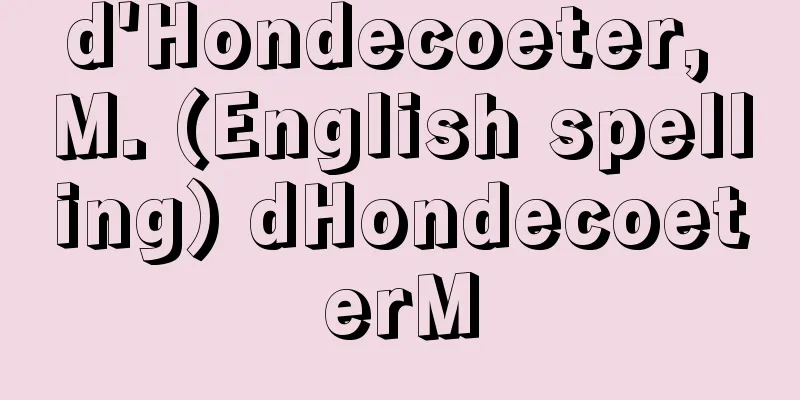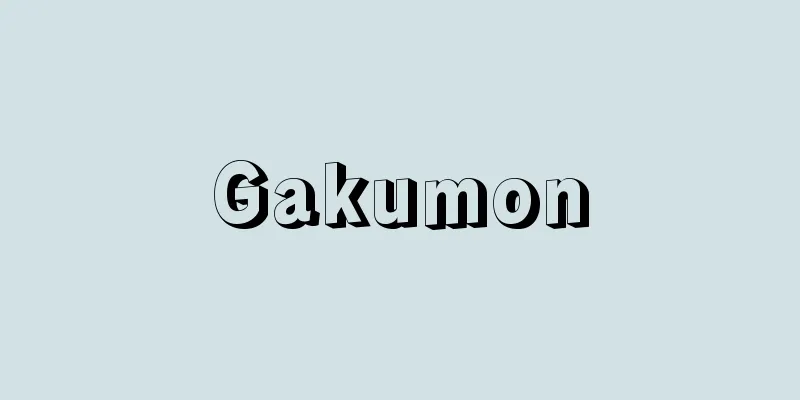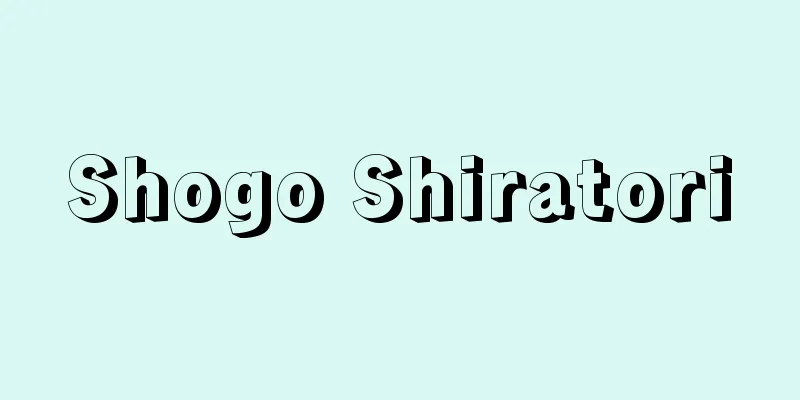Pain Clinic - Pain Clinic
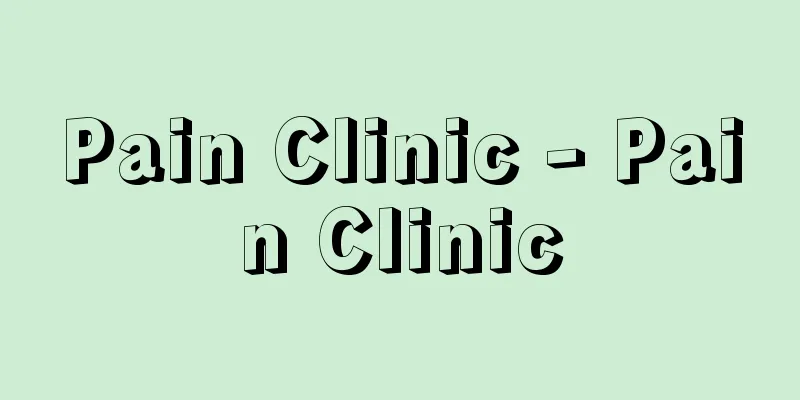
|
It refers to a medical facility that aims to diagnose and treat pain, and is one of the specialties of anesthesiology. The pain that is diagnosed is not only pain that will go away immediately if the underlying disease is cured, but mainly chronic pain or intractable pain. A facility where doctors from various departments such as anesthesiologists, orthopedic surgeons, psychiatrists, and neurosurgeons, as well as pharmacists, nurses, and physical and occupational therapists come together to comprehensively diagnose and treat patients' pain is specifically called a pain center (a larger facility than a pain clinic, an independent and comprehensive organization that goes beyond the category of anesthesiology). However, running a pain center can sometimes be very difficult, and in Japanese pain clinics, anesthesiologists usually treat pain mainly with drug therapy and nerve blocks. The pain clinic treats neuralgia, including trigeminal neuralgia and post-herpetic neuralgia, facial pain, headaches, fascial disorders, pain accompanied by muscle stiffness in the neck, back and lower back, frozen shoulder, whiplash, pain caused by malignant tumors (visceral pain in terminal cancer, chest pain, pain caused by cancer metastasis), blood circulation disorders in the limbs, etc. In addition, although not accompanied by pain, facial spasms, facial nerve paralysis and sudden hearing loss are also frequently treated. Nerve blocks used in pain clinics can be broadly divided into therapeutic blocks and diagnostic blocks. They can also be divided into somatic nerve blocks and sympathetic nerve blocks depending on the nerve being blocked. A diagnostic block is when, for example, there is circulatory disorder in the lower limbs and it is necessary to decide whether or not a surgical sympathectomy would be effective as a treatment, so a sympathetic nerve block is performed first, and the surgical plan is decided based on the effectiveness of the block. [Hideo Yamamura and Yoshitsugu Yamada] [References] | | |Source: Shogakukan Encyclopedia Nipponica About Encyclopedia Nipponica Information | Legend |
|
痛みの診断と治療を目的とした診療施設をさし、麻酔科の専門分野の一つである。診断の対象とされる痛みは、もとの病気を治せばすぐに治まるような痛みだけではなく、慢性痛あるいは難治疼痛(とうつう)が中心である。麻酔科医、整形外科医、精神科医、脳外科医といった各科の医師や薬剤師、看護師、理学作業療法士らが集まって、患者の痛みを総合的に診断、治療しているような施設を、とくにペインセンター(ペインクリニックよりも規模が大きく、麻酔科という範疇(はんちゅう)を越えた独立した総合的な組織)とよぶ。ただし、ペインセンターの運営はときとして非常にむずかしく、日本のペインクリニックでは普通、麻酔科医が薬物療法と神経ブロックをおもな治療手段として痛みの治療を行っている。 ペインクリニックの治療対象となるものは、三叉(さんさ)神経痛、帯状疱疹(ほうしん)後神経痛などをはじめとする神経痛、顔面痛、頭痛、筋膜疾患、頸部(けいぶ)・背部・腰部における筋肉のこりを伴う痛み、五十肩、むち打ち症、悪性腫瘍(しゅよう)による痛み(癌(がん)末期の内臓痛、胸痛、癌転移による痛み)、四肢の血行障害などである。また、痛みを伴うものではないが、顔面けいれん、顔面神経麻痺(まひ)、突然性難聴などもよく対象となる。 ペインクリニックで用いられる神経ブロックは、大きく分けると治療的ブロック、診断的ブロックの二つとなる。また、ブロックを行う神経によって、体神経ブロックと交感神経ブロックとに分けられる。診断的ブロックというのは、たとえば、下肢の血行障害があり、治療として外科的に交感神経切除術を行うことが有効かどうかを決めなければならないとき、まず、交感神経ブロックを行い、その効果の有無によって手術の方針をたてるような場合をいう。 [山村秀夫・山田芳嗣] [参照項目] | | |出典 小学館 日本大百科全書(ニッポニカ)日本大百科全書(ニッポニカ)について 情報 | 凡例 |
Recommend
Travel - Tabi
1. To leave the place where you live and visit a d...
Ogieroyu (first generation)
...A type of shamisen music. The first Ogie Royu ...
Hotel Carnavale - Hotel Carnavale
…behind the main building is a landscaped garden ...
Imperial Diet - teikokugikai
This refers to the parliament in the Constitution...
Treasury of Atreus
One of the most representative tholos-type tombs, ...
Ardisia japonica (English name: Ardisia japonica)
An evergreen shrub of the Ardisiaceae family. It i...
Chairperson's Decision
...However, by convention, the Speaker does not p...
Quasi-Sannomiya - Jusangu
[Noun] A title specially created in and after the ...
Silent reading - Mokdoku
〘 noun 〙 Reading with the eyes only, without speak...
Wang Anshi - Wang Anshi
A politician from the Northern Song Dynasty in Ch...
John of Dumbleton
In the 14th century, various problems in Aristote...
White sorrel - White sorrel
A beautiful perennial plant of the lily family tha...
Dordrecht
A city in the southwest of the Netherlands. 20 km ...
Iteian
The name of a Zen temple (Kyorozan Ikeizan) on Tsu...
Grandier, U. (English spelling) GrandierU
...In a demon possession case set in a 17th centu...


